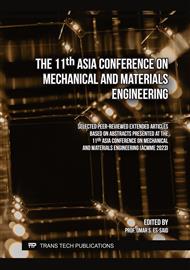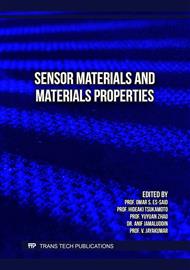[1]
European Committee for Standardization. BS EN 13261 : 2020 Railway applications - Wheelsets and bogies - Axles - Product requirements. London,United Kingdom: BSI; 2020.
DOI: 10.3403/02914532
Google Scholar
[2]
Zerbst U, Vormwald M, Andersch C, Mädler K, Pfuff M. The development of a damage tolerance concept for railway components and its demonstration for a railway axle. Eng Fract Mech. 2005 Jan;72(2):209–39.
DOI: 10.1016/j.engfracmech.2003.11.011
Google Scholar
[3]
Zerbst U, Beretta S, Köhler G, Lawton A, Vormwald M, Beier HT, et al. Safe life and damage tolerance aspects of railway axles – A review. Eng Fract Mech [Internet]. 2013 Jan [cited 2019 Sep 6];98(1):214–71
DOI: 10.1016/j.engfracmech.2012.09.029
Google Scholar
[4]
DE Freitas M, François D. Analysis of Fatigue Crack Growth in Rotary Bend Specimens and Railway Axles. Fatigue Fract Eng Mater Struct. 1995;18(2):171–8.
DOI: 10.1111/j.1460-2695.1995.tb00152.x
Google Scholar
[5]
Madia M, Beretta S, Zerbst U. An investigation on the influence of rotary bending and press-fitting on stress intensity factors and fatigue crack growth in railway axles. Eng Fract Mech. 2008;75(8):1906–20.
DOI: 10.1016/j.engfracmech.2007.08.015
Google Scholar
[6]
Pourheidar A, Beretta S, Ragazzi D, Baykara C. Comparison of SIF solutions for cracks under rotating bending and their impact upon propagation lifetime of railway axles. Procedia Struct Integr [Internet]. 2018;8:610–7
DOI: 10.1016/j.prostr.2017.12.060
Google Scholar
[7]
Simunek D, Leitner M, Maierhofer J, Gänser HP, Pippan R. Analytical and numerical crack growth analysis of 1:3 scaled railway axle specimens. Metals (Basel). 2019;9(2).
DOI: 10.3390/met9020184
Google Scholar
[8]
Madia M, Beretta S, Schödel M, Zerbst U, Luke M, Varfolomeev I. Stress intensity factor solutions for cracks in railway axles. Eng Fract Mech [Internet]. 2011 Mar [cited 2019 Nov 7];78(5):764–92
DOI: 10.1016/j.engfracmech.2010.03.019
Google Scholar
[9]
Milano P, Meccanica D. SIF SOLUTIONS FOR CRACKS IN RAILWAY AXLES UNDER ROTATING BENDING. :2–7.
Google Scholar
[10]
Nwe T, Pimsarn M. Effect of interference on the press-fitting of railway wheel and axle assemblies. 2021; https://iopscience.iop.org/article/
DOI: 10.1088/1757-899X/1137/1/012051
Google Scholar
[11]
Simulia DSC. Abaqus Analysis User's Manual [Internet]. Abaqus Documentation. 2016. 1137 p. http://www.maths.cam.ac.uk/computing/software/abaqus_docs/docs/v6.12/pdf_books/BENCHMARKS.pdf
Google Scholar
[12]
Rice JR. A Path Independent Integral and the Approximate Analysis of Strain Concentration by Notches and Cracks. J Appl Mech. 1968;35:379–86.
DOI: 10.1115/1.3601206
Google Scholar
[13]
Abaqus. Abaqus Theory Manual. Vol. IV. 2013.
Google Scholar
[14]
Zerbst U, Mädler K, Hintze H. Fracture mechanics in railway applications - An overview. Eng Fract Mech. 2005;72(2):163–94.
DOI: 10.1016/j.engfracmech.2003.11.010
Google Scholar



